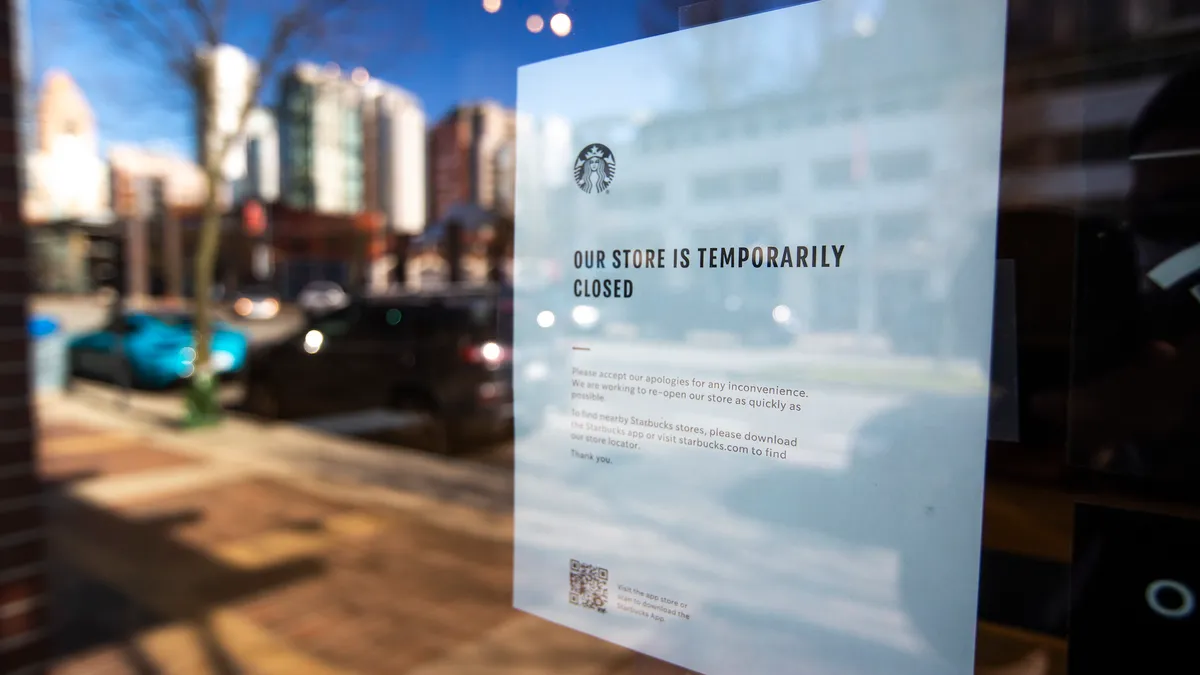Dive Brief:
- The effects of the coronavirus pandemic on digital media spending were minimal during the first quarter, which mostly showed growth from a year earlier, marketing firm Merkle announced with the release of its "Q1 2020 Digital Marketing Report." Its study of client media spending found a positive performance for Amazon, steady gains for Facebook and Instagram, and slower growth for Google and YouTube.
- Amazon's "sponsored products" ads, which appear on the first page of the e-commerce company's search results and product pages, saw an 87% yearly jump in click growth, while direct sales from the ads surged 70%. Conversion rates for those ads were about five times higher than for Google's shopping ads in Q1, per Merkle.
- Google search ad spend grew 11% in Q1 from a year earlier, but slowed to 4% in March as pandemic lockdowns went into effect, while YouTube ad spending rose 19%. Spending on Facebook ads excluding Instagram grew 19%, while advertiser spending on Instagram grew 39%, per Merkle.
Dive Insight:
Marketers increased their spending on digital advertising in Q1 from a year earlier, while negative effects of the coronavirus pandemic weren't seen until late into the three-month period, Merkle's client data shows. While it's more likely that effects of the health crisis will show up in spending data for the current quarter, some industries and digital platforms were hit particularly hard by the end of Q1. For example, travel advertisers like airlines, hotels and cruise ships slashed their spending on Google Search by almost 80% by the end of March. It's not clear when that spending will recover, with travel services like Booking.com, Expedia and Airbnb either cutting or suspending their marketing for the remainder of the year, CNBC reported.
The pandemic had a mixed effect on retailers, with "essential" businesses like grocers and drugstores seeing a 53% surge in organic search by mid-March as consumers shopped for household necessities. "Non-essential" retailers like apparel and specialty merchandisers experienced a 31% drop in organic clicks during the same period, per Merkle.
Merkle's data help to provide more detail about marketer spending on Google, Facebook and Amazon, the dominant digital ad platforms that all reported their Q1 revenue last week. Google's parent company Alphabet reported 33% growth in ad spending for YouTube in Q1 from a year earlier, higher than the 19% gains that Merkle observed among its clients. The differences may indicate a weighting among Merkle's clients toward industries that cut or halted spending. Ad impressions fell 2% for the quarter while average cost per mille (CPM) rose 21%, per Merkle.
Facebook typically doesn't break out ad revenue for its social network and the photo-sharing app Instagram, but Merkle provides more details about those trends. Facebook reported a 17% gain in ad revenue in Q1 from a year earlier, though ad prices fell amid lower demand. That gain was less than the 19% gain on Facebook ads, excluding Instagram, observed by Merkle. The firm said advertiser spending on Instagram grew 39% from a year earlier, helping to confirm other reports indicating the app's importance to Facebook's growth. Among brands that ran ads on both Facebook and Instagram, Instagram accounted for 27% of total spending and 34% of impressions, while Instagram Stories ads accounted for 22% of Instagram spend and 28% of impressions in Q1, per Merkle.
Amazon reported that advertising and other revenue increased 44% from a year earlier, while Merkle observed a 67% gain in spending. Amazon CFO Brian Olsavsky said ad sales were a "mixed bag" for the company as some advertisers pulled back, pressuring ad prices. The e-commerce giant doesn't have significant exposure to the travel, hospitality and automotive industries, helping to protect Amazon's ad sales from the declines observed by other digital ad platforms, he said in a conference call with analysts. It's high conversion rates for its sponsored products ads — about five times higher than for Google's shopping ads — demonstrates why marketers are increasingly using Amazon as an ad platform.














